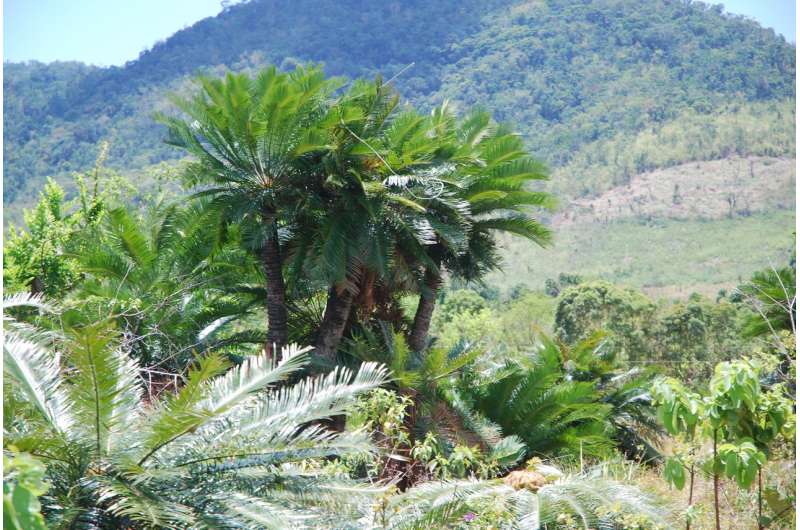Update on endangered Philippine cycad species

When plant species are threatened to the point that they reach a designation of Critically Endangered, sustaining an understanding of threats requires repeated site visits by knowledgeable biologists to the various sub-populations. The Critically Endangered Cycas wadei, which is known to occur in a single location in the Philippines, was recently evaluated for the contemporary status of the population. The findings and recommendations appear in the current issue of the Journal of Biodiversity & Endangered Species.
This tree is one of 114 described species of Cycas throughout the world and one of 11 Cycas species from the Philippines. The designation of Critically Endangered is primarily based on the fact that the entire population resides in a single, small location on one island. Scientists call plants with these traits "endemic" species. Being restricted to one location increases the vulnerability to any new threats. These threats are amplified by the fact that plants are immobile, and the existing population cannot migrate to new locations like populations of animals.
The study was conducted through a partnership between the University of Guam and the Philippine Native Plants Conservation Society. Ecologist Thomas Marler and taxonomist Ulysses Ferreras carried out the field work. The authors noted that updates on threatened species are often based on general observations. They countered this nonspecific approach by instead implementing empirical methods for determining various population traits. "Establishing plots and applying direct measurements within those plots allowed us to use actual numbers to determine the structure and density of the population," said Marler.
The take-home outcomes of the species update illuminated the most important threats to the future health of Cycas wadei. The two main threats of habitat loss and poaching are not unique to this Cycas species, as many species throughout the world are endangered because of these same threats. The population resides in a grassland that is periodically burned. Fire damage is a third threat that the authors illuminated. Deficiencies in potassium in the soils were identified as the foremost resource constraint on tree growth and development.
Cycas wadei belongs to a group of plants called cycads. This group is comprised of two families and ten genera. Cycads are among the most threatened groups of plants worldwide. Marler and Ferreras hope that the empirical approach they employed can be used for other species updates.
More information: Journal of Biodiversity & Endangered Species, DOI: 10.4172/2332-2543.1000193
Provided by University of Guam




















